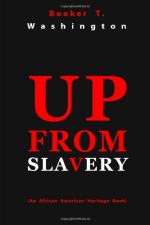For several months the work of securing the money with which to pay for the farm went on without ceasing. At the end of three months enough was secured to repay the loan of two hundred and fifty dollars to General Marshall, and within two months more we had secured the entire five hundred dollars and had received a deed of the one hundred acres of land. This gave us a great deal of satisfaction. It was not only a source of satisfaction to secure a permanent location for the school, but it was equally satisfactory to know that the greater part of the money with which it was paid for had been gotten from the white and coloured people in the town of Tuskegee. The most of this money was obtained by holding festivals and concerts, and from small individual donations.
Our next effort was in the direction of increasing the cultivation of the land, so as to secure some return from it, and at the same time give the students training in agriculture. All the industries at Tuskegee have been started in natural and logical order, growing out of the needs of a community settlement. We began with farming, because we wanted something to eat.
Many of the students, also, were able to remain in school but a few weeks at a time, because they had so little money with which to pay their board. Thus another object which made it desirable to get an industrial system started was in order to make in available as a means of helping the students to earn money enough so that they might be able to remain in school during the nine months’ session of the school year.
The first animal that the school came into possession of was an old blind horse given us by one of the white citizens of Tuskegee. Perhaps I may add here that at the present time the school owns over two hundred horses, colts, mules, cows, calves, and oxen, and about seven hundred hogs and pigs, as well as a large number of sheep and goats.
The school was constantly growing in numbers, so much so that, after we had got the farm paid for, the cultivation of the land begun, and the old cabins which we had found on the place somewhat repaired, we turned our attention toward providing a large, substantial building. After having given a good deal of thought to the subject, we finally had the plans drawn for a building that was estimated to cost about six thousand dollars. This seemed to us a tremendous sum, but we knew that the school must go backward or forward, and that our work would mean little unless we could get hold of the students in their home life.
One incident which occurred about this time gave me a great deal of satisfaction as well as surprise. When it became known in the town that we were discussing the plans for a new, large building, a Southern white man who was operating a sawmill not far from Tuskegee came to me and said that he would gladly put all the lumber necessary to erect the building on the grounds, with no other guarantee for payment than my word that it would be paid for when we secured some money. I told the man frankly that at the time we did not have in our hands one dollar of the money needed. Notwithstanding this, he insisted on being allowed to put the lumber on the grounds. After we had secured some portion of the money we permitted him to do this.




